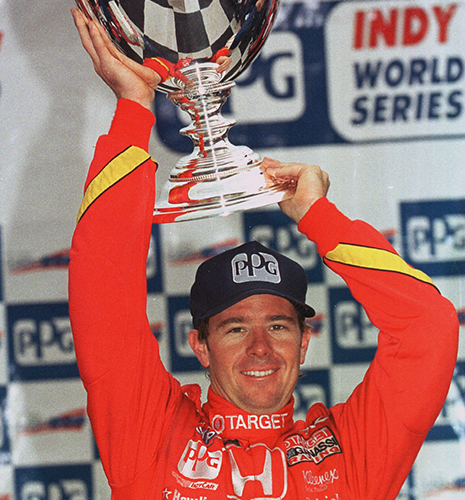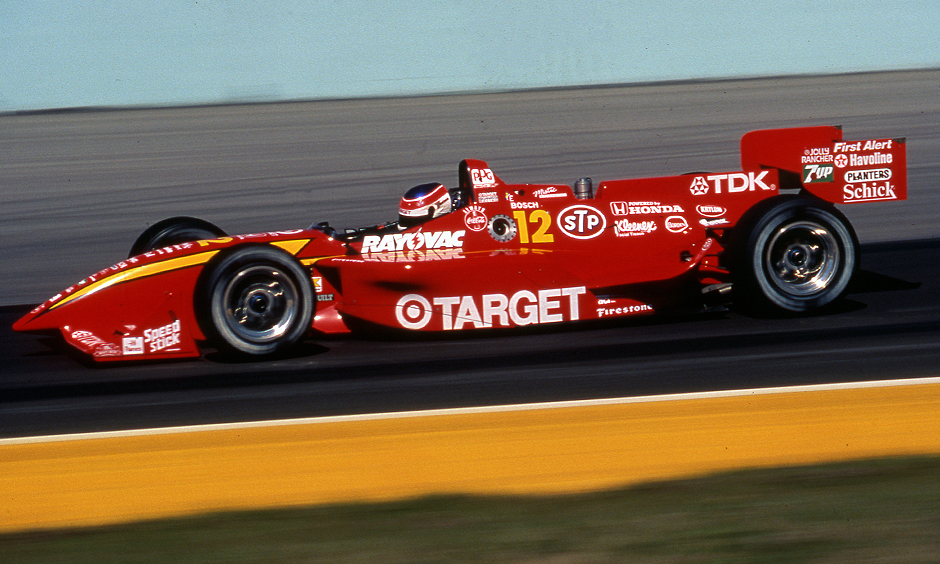Ganassi dynasty kick-started 20 years ago today at Homestead
MAR 03, 2016
Whenever Jimmy Vasser jumps behind the wheel of his 1997 Acura NSX, his mind inevitably wanders back two decades to the race that started his drive to the Indy car title and four years of Target Chip Ganassi Racing dominance.
Although the car was a prize for winning the 1996 title, the reason it came into his possession traces to a conversation following his victory in the inaugural Grand Prix of Miami at Homestead-Miami Speedway 20 years ago today.
“After I won the race, we were celebrating in our hospitality and everybody was really happy, so I took the opportunity to tell the Honda executives that 'if I win the championship, you guys are going to give me an Acura NSX' — and I still have it, it's like a trophy,” Vasser recalled.
“That was really the beginning of big things: We went on to win four in a row. It's good memories and good times.”
 The win sparked a run where Ganassi and its new supplier partners, Honda and Firestone, won the next 30 of 62 starts and swept four CART championships beginning with Vasser in 1996, Alex Zanardi in 1997 and 1998, and rookie Juan Pablo Montoya -- now a crafty veteran driving for Team Penske -- in 1999. Two decades later, Chip Ganassi Racing Teams, Honda and Firestone remain vital participants in the Verizon IndyCar Series. The Ganassi team is honoring those championship years by returning the yellow lightning bolt to the livery of the car that Scott Dixon, the reigning series champion, is driving this season.
The win sparked a run where Ganassi and its new supplier partners, Honda and Firestone, won the next 30 of 62 starts and swept four CART championships beginning with Vasser in 1996, Alex Zanardi in 1997 and 1998, and rookie Juan Pablo Montoya -- now a crafty veteran driving for Team Penske -- in 1999. Two decades later, Chip Ganassi Racing Teams, Honda and Firestone remain vital participants in the Verizon IndyCar Series. The Ganassi team is honoring those championship years by returning the yellow lightning bolt to the livery of the car that Scott Dixon, the reigning series champion, is driving this season.
After Homestead in 1996, Vasser took the checkered flag in three of the next five races, before overcoming some mid-season struggles to fend off a hard-charging Michael Andretti driving for Newman/Haas Racing.
Making it all the more impressive was the fact that the 1996 championship came in the same year that Vasser's Ganassi team switched to Honda engines and Firestone tires.
After returning to Indy car racing in 1995 following a 20-year absence, Firestone's goal was to supply high-quality teams capable of winning regularly. While titles are always the ultimate prize, having it happen in just its second year back in the series was a welcome development for the tire maker.
“With our relatively young program, every victory was a validation of our technology, hard work and efforts. We were thrilled with the title win so early in our program, and it was a special moment for everyone in the Firestone program and a validation that we were on the right track for the future,” said Dale Harrigle, chief engineer and manager of race tire development for Bridgestone Motorsports.
“Ganassi worked tirelessly with Reynard to optimize its chassis to the Firestone tires and the results spoke for themselves. As the Ganassi team started winning races and we were doing more testing with them, they were able to work closely with us in tire development and start to understand the Firestone tires even better.”
At the time, Ganassi's engine partner Honda was also a relatively new entrant after joining CART competition in 1994.
With the racing success Honda had on the Formula One stage in the late 1980s and early 1990s, expectations were high for the engine maker, especially since many of its former grand prix engineers had moved to the Indy car program.
And after Honda failed to qualify a car for the 1994 Indianapolis 500, its engineers were even more determined to deliver a championship-winning motor to its teams, something it did just two years later.
“Our challenging spirit was put to the test and our guys doubled down and never gave up,” said Steve Eriksen, Honda Performance Development vice president and chief operating officer.
“That 1996 season was our first manufacturer's championship and when you see where we were in 1994 and the progress we made in two years, looking back on it, it was really quite impressive and a lot of hard work.”
It also took lots of teamwork between the drivers and the engine supplier, with the newly powerful Ganassi outfit playing a key role in ensuring that the Honda power remained competitive.
The same went for the Firestone rubber, with each Ganassi driver taking a slightly different path to the championship. The titles the team claimed from 1996-99 are the first four of what is now 11 Indy car championships.
“Vasser was simply tremendous on ovals. He had a great feel for the car on the ovals and was able to help our development process of our oval tires tremendously with his feedback,” Harrigle said. “Zanardi was simply amazing on the road and street courses, being able to make a very soft tire work successfully over a fuel stint when many other drivers would struggle in the second half of the run.
“Montoya winning seven races as a rookie in the CART series on his way to the series title demonstrated his all-around versatility as a driver.”
While it all began with that win at Homestead 20 years ago, Vasser insisted that a hint of things to come came late in 1995 when Tasman Motorsports driver André Ribeiro started on pole and dominated the New England 200 at New Hampshire International Speedway in a Honda-powered, Firestone-shod Reynard.
“You could see at the end of the previous season after André Ribeiro won with ease at New Hampshire. Short ovals can have a bit of a black heart to them and we all knew then that the Reynard-Honda-Firestone was going to be pretty dominant,” said Vasser, now a retired driver but co-owner of the KVSH Racing team in the Verizon IndyCar Series.
“And we knew from winter testing that the package was going to be good. We were quickest in testing all winter.”






















